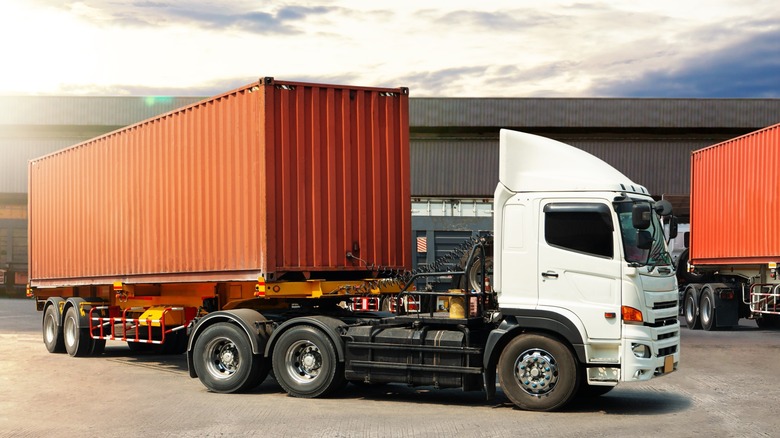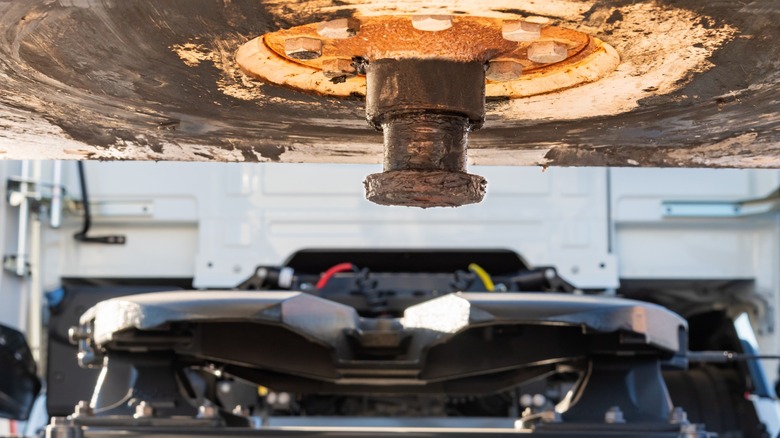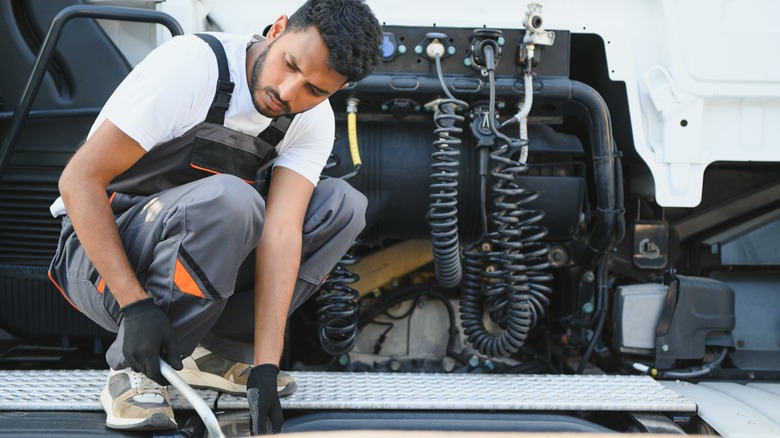What Is A Kingpin On A Semi Truck Trailer?
Have you ever looked closely at those massive trucks on the highway carrying heavy loads? They're made up of two main parts: the semi-truck and the semi-trailer. Together, they form the full rig you see hauling goods across the country. Truckers sometimes drive the semi-truck without the trailer — a practice known as "bobtailing."
However, it's not the safest thing to do, mainly because the trailer adds the weight and balance that makes the truck more stable on the road — without it, the truck is more prone to skidding or losing control, especially in bad weather or during sudden stops. But how exactly do these two parts connect and work together as one unit?
Well, it all comes down to a coupling system that consists of two key parts: the fifth wheel on the truck and the kingpin on the trailer. These components lock together, making sure the trailer is attached to the semi-truck, and also able to move with the truck as it turns and pivots. While the coupling process may seem straightforward, it's actually more precise than it appears. Without a proper connection, there's a high risk of the truck and the trailer detaching and can end up causing a fatal accident. While the kingpin might be a small piece, it plays a pretty big role in how the entire rig functions and drives.
What's a kingpin, and how does it work on semi-trucks?
The kingpin is located underneath the front axle of a semi-trailer. It's a small, sturdy metal pin that typically comes in two standard sizes: 2 inches and 3.5 inches. However, don't let the compact size deceive you; kingpins are generally made from 20CrMnTi, a type of alloy steel that's incredibly hard, tough, and resistant to wear and tear.
Kingpins can be installed on the semi-trailer in two different ways: through welding or bolting. As the name suggests, welded kingpins are permanently welded to the skid plate of the semi-trailer. Once the kingpin is installed, it cannot be replaced without cutting it off. On the other hand, bolted kingpins are more flexible for maintenance. These kingpins consist of a retention plate, the kingpin itself, and bolts. The retention plate is welded to the skid plate of the trailer, and the kingpin can then be bolted on. If the kingpin wears out or needs replacement due to damage, it can be unbolted and replaced without the need for extensive welding work.
In terms of structure, a kingpin is designed with a top section that flares out much like a nail's head, a narrower middle section, and a slightly flared-out bottom section as well. This design allows it to slot into the truck's fifth wheel, which is shaped like a horseshoe. When the kingpin is inserted into the fifth wheel on the truck, it forms a secure mechanical lock and is securely attached to the truck — forming the full rig where the trailer follows the truck's movements smoothly through turns and bumpy roads without detaching or becoming rigid.
How long does a kingpin last?
Efficiency is key in the trucking world, and so every part is designed to be tough, durable, and long-lasting. This is why semi-trucks rely on diesel engines, and kingpins are designed according to industry standards set by bodies like the SAE (Society of Automotive Engineers) and TMC (American Trucking Association — Technology and Maintenance Council). SAE guidelines suggest that kingpins can last up to 10 years. However, that's still dependent on several factors, such as the conditions of the road, the weight of the load hauled in the trailer, and the frequency of maintenance.
Overloading or consistently hauling heavy cargo puts additional strain on the kingpin. The more weight it bears, the more friction and stress it endures, and the faster it degrades. On top of that, rough roads with lots of bumps and potholes compound the stress on both the kingpin and the fifth wheel. Nonetheless, just like diesel engines require regular maintenance to remain efficient, kingpins also need routine care to handle the constant friction and stress they endure on the road.
Drivers make a habit of cleaning, lubricating, and regularly inspecting this area. During these checks, it's important to look for signs of corrosion, rust, or visible damage such as cracks or bending. Measuring the diameter of the kingpin can help determine whether it has reached its wear limit, typically set at 1/8th of an inch. If your kingpin exceeds this threshold, it's no longer safe for use and should be replaced immediately. If you continue to use a worn kingpin, it can accelerate wear on other components like the tires. It'll also affect how the full rig handles and steers, ultimately leading to unsafe hauling conditions and even more expensive repairs down the line.


